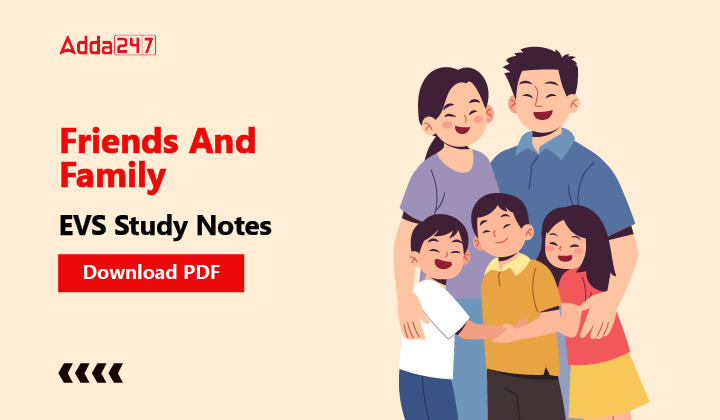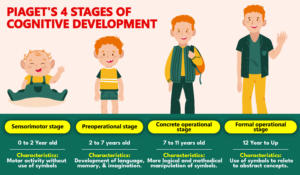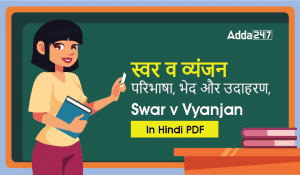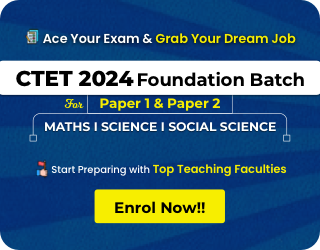Table of Contents
Environment studies is a multi-disciplinary science comprising of various branches of studies like chemistry, physical science, life science, agriculture, health, sanitary engineering etc. Environmental Studies may be an interesting subject having 30 questions in CTET and other State TET Exams. The Environmental Science section divides its questions into two parts: Subject Content which consists of 15 marks and EVS Pedagogy which consist of 15 marks. It is advised is to study the NCERT books from classes 1 to 8 to prepare well for the CTET Exam. The current article will give a few important points on the topic of Friends and Family.
FRIENDS AND FAMILY
(1) Family:
In the human context, a family is a group of people related by blood, affinity and co-residence. In a family, there exists a feeling of love, cooperation, attachment and care among the members. Family is the primary institution for the socialization of children. It plays a vital role in shaping the individual’s social life and it is the place where humans first learn to live collectively. Family is the basic unit of society.
A. Types of Family:
1. Nuclear Family: A family, in which a married couple lives with their unmarried children. It is sometimes also called a conjugal family.
2. Extended/Joint Family: It is a family in which a married couple lives with his parents, grandparents, children and other relatives. Earlier in India, most of the families were of this nature, but now the concept of joint family is getting diluted.
3. Matrilocal Family: It is a family where the mother heads the family and in this type of family couples live with or near the female’s family after the marriage.
4. Patrilocal Family: A family, where father heads the family and in this type of family couples live with or near the male’s family after the marriage.
5. Consanguineous Family: Consanguineous mean of same blood’, it means in this kind of family individual who has descended from the same ancestor lives together.
B. Characteristics of Family:
1. Hereditary Relation: Members in the family are related to each other by heredity and traits are transferred from one generation to the next generation.
2. Economic Function: Family provides economic support to its members, members of the family earns money by engaging in any economic activity.
3. Essentiality of Marriage: To reproduce is the very essential function of human and any living being Marriage helps in carrying the family and lineage forward generation after generation.
4. Social Security: The family provides security to its members and it is a basic unit of social security.
C. Functions of a Family:
The functions of the family have been divided by various thinkers. Following are the functions of family
1. Maciver divided the functions of the family into two forms: essential and non – essential. Economic function, reproductive function, educational function, sexual function comes under the essential function while recreational function comes under non – essential
2. Ogburn and Nimkoff categorized the family’s function into affectional, economic, protective, religious, educational and recreational domain.
3. Hundberg divided the function of the family into four parts i.e. primary group satisfaction, cooperation and division of labour, care and training of children, regulation of sexual behaviour and reproduction.
D. Contribution of Family in Development of Child:
Natural development of the child is affected by the surroundings in which child lives. It is a duty of a family to fulfill the basic needs of child, look after the diet, hygiene and physical activity of child as these factors help in the physical development of child.
• Hereditary traits of parents and education of parents play important role in mental development of child.
• Environment of home and nearby surroundings effect the mental development of child. Child begin his early education and training within the family.
• Family is an essential vehicle for transmission of knowledge, values, attitude and practices.
(2) Friend:
• According to Oxford dictionary, “A person with whom one has a bond of mutual affection, typically one exclusive of sexual or family relations”. As we go through life, we have the opportunity to meet a variety of different people but few become friends.
• True friend shares joy and sorrow, stands with him in difficult circumstances and tries to protect in all the situations. Friends have mutual respect for each other. Relation between the friends is called friendship.
• Friendship alone is that relation in the world where we select partner/friend/companion based on our interest. Everyone is free to select friends of their choice and no one can forcefully befriend with other individual. Friend leaves an important impact on overall development of a child.
• Fruitful social relationship in childhood and adolescence time help a child develop better overall personality and protect from later psychological disorders.
• According to Aristotle, friendship can be classified into three types:
1. Friendship of Utility: In this kind of friendship, two people are friend for sake of their own interest.
2. Friendship of Pleasure: In this kind, people share common interest and pleasure. They share their moment of pleasure with each other.
3. Friendship of the Good: In this kind of friendship, two friends have mutual respect for one another. This type of friendship is not because of mutual interest and pleasure.
(3) Relatives and Relationships:
1. Relatives are those individual in a society or family who are connected to each other by blood relations, marriage, feeling or emotions etc. Relative and relationship does influence the child in growth and development.
2. Child develops initial communication skill, interpersonal relationship by interacting with them and observing them.
3. Child develops attitude towards life, qualities like sympathy, empathy, compassion, sensitiveness, awareness towards culture, religions practices and traditions of family and society by observing the family and his relatives.
(4) Work and Play:
Famous educationist Maria Montessori has said, “Play is the work of the child”. Play activities are essential to healthy development for children and adolescents.
• The activities by children stimulate and influence the pattern of the connections made between the nerve cells.
• Activities influence the development of fine and gross motor skills, language, socialization, personal awareness, emotional well – being, creativity, problem – solving and learning ability
• The most important role that play can have is to help children to be active, make choices and practice actions to mastery
• Play links sensory – motor, cognitive and social – emotion experiences and provides an ideal setting from brain development.
A. Importance of Play in Education and Health:
Work and play forms an important component for overall development of child that is why play has been given important place in schools curriculum.
• Through games or play it is easier to teach children and concept taught by the way of play remains in their memory for very long time as they grasp it easily by observing it practically.
• Through constructive activity and game child tries to learn something new. These plays and games help in building the imagination power, developing thinking skill, enhancing creative skill, building cooperation among children, team work etc.
• Games, sports and other physical activity helps in developing the immunity and enables body to fight against diseases and infections.
• Games and physical activity are very important for mental development and these activities reduce the stress and enable the body to cope with the stress.
• Physical and motor development through play involves height, weight, general appearance/tone of the body co – ordination of large and finer muscles.
• Cognitive development includes forming self – concept forming concepts of size, shape and colors. Different types of blocks, beads, toys, clay, sand, puzzles and other natural materials, enable children to learn to differentiate between different shapes, size, color, texture and volume.
• Socio – emotional development includes establishing, relationships, developing behavioral controls and so skills that make them acceptable in their family, school community.
CTET EVS Study Notes PDF
Candidates preparing for the CTET Exam must check out the CTET EVS Study Notes PDF Link for easy access to study material on Friends And Family Topic under the CTET EVS Section.
Click Here to Acces CTET EVS Study Notes PDF on Friends And Family



 Piaget's 4 Stages of Cognitive Developme...
Piaget's 4 Stages of Cognitive Developme...
 स्वर व व्यंजन - �...
स्वर व व्यंजन - �...
 500+ पर्यायवाची श�...
500+ पर्यायवाची श�...








